
Dryad's Saddle, a Unique and Tasty Mushroom Eat The
Edible Scientific Name Polyporus squamosus Family Polyporaceae Description Large, fleshy, scaly, yellowish tan bracket fungus; large, yellowish white pores; short stalk; smells like watermelon rind. Grows singly or in layers, on living or dead deciduous wood. May-October. Cap circular to fan-shaped; yellowish tan; covered with dark, hairy scales.
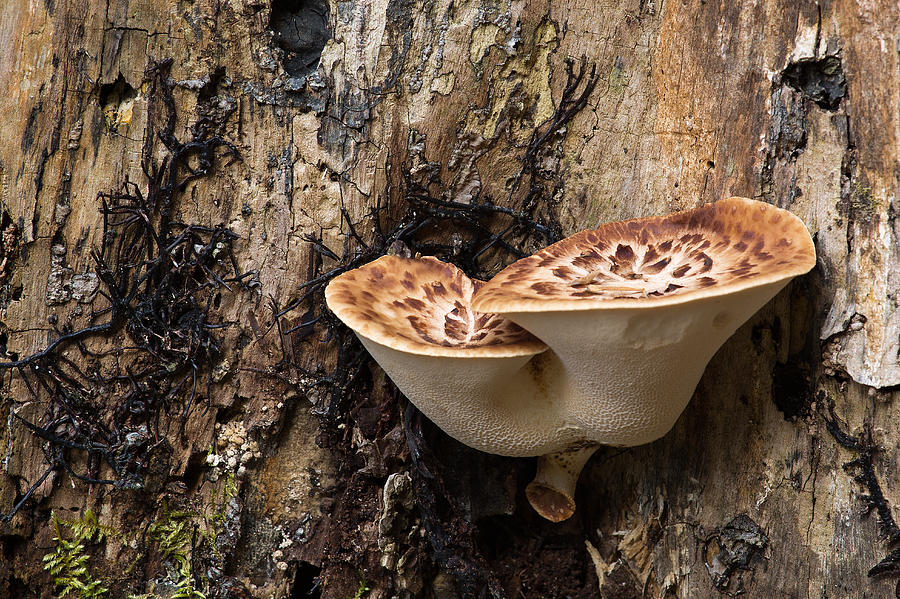
Dryad Saddle Shelf Mushroom Photograph by Dale Kincaid
Season - April - August Habitat - growing as a parasite on dead and dying deciduous trees, especially elm, beech and sycamore. The pores of young dryad's saddle often smell of water melon! I have harshly rated this beautiful fungi for edibility due to the difficulty of catching it in its youthful prime.

Dryad's Saddle Mushroom ID & Recipe YouTube
The dryad's saddle ( Cerioporus squamosus, formerly known as Polyporus squamosus ), and referred to as the pheasant's back or pheasant back mushroom, or hawk's wing, is a widespread edible wild fungi that is easy to spot beginning in mid to late April and continuing through June.
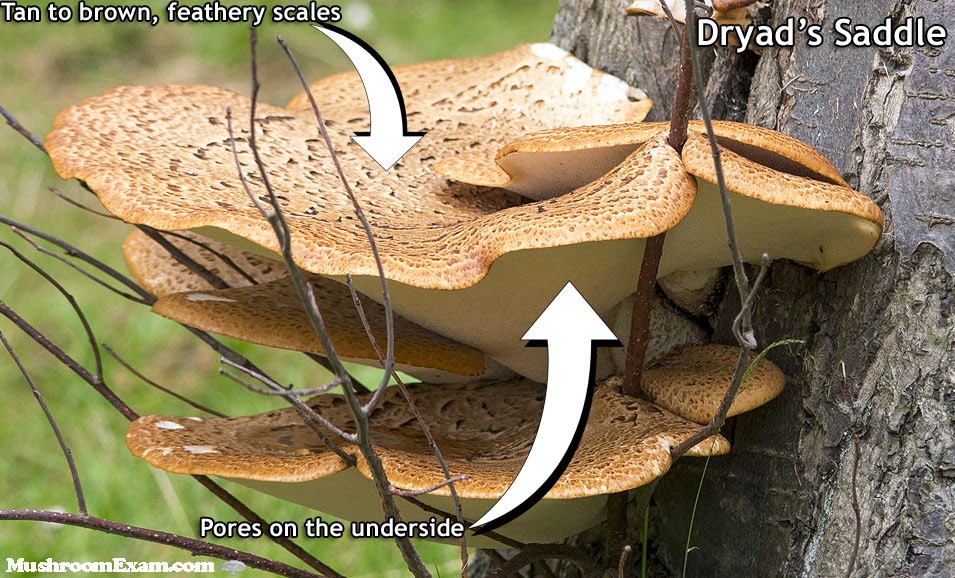
Mushroom Identification Dryad's Saddle
Dryad's Saddle, also known as Pheasant's Back and Hawk's Wing, is a polypore-like bracket mushroom. It fruits on dying or dead hardwood trees. Dryad's Saddle is easily distinguishable by the cap's stylish light and dark brown patterns. They look like finely drawn scales or the back of a brown-feathered bird.
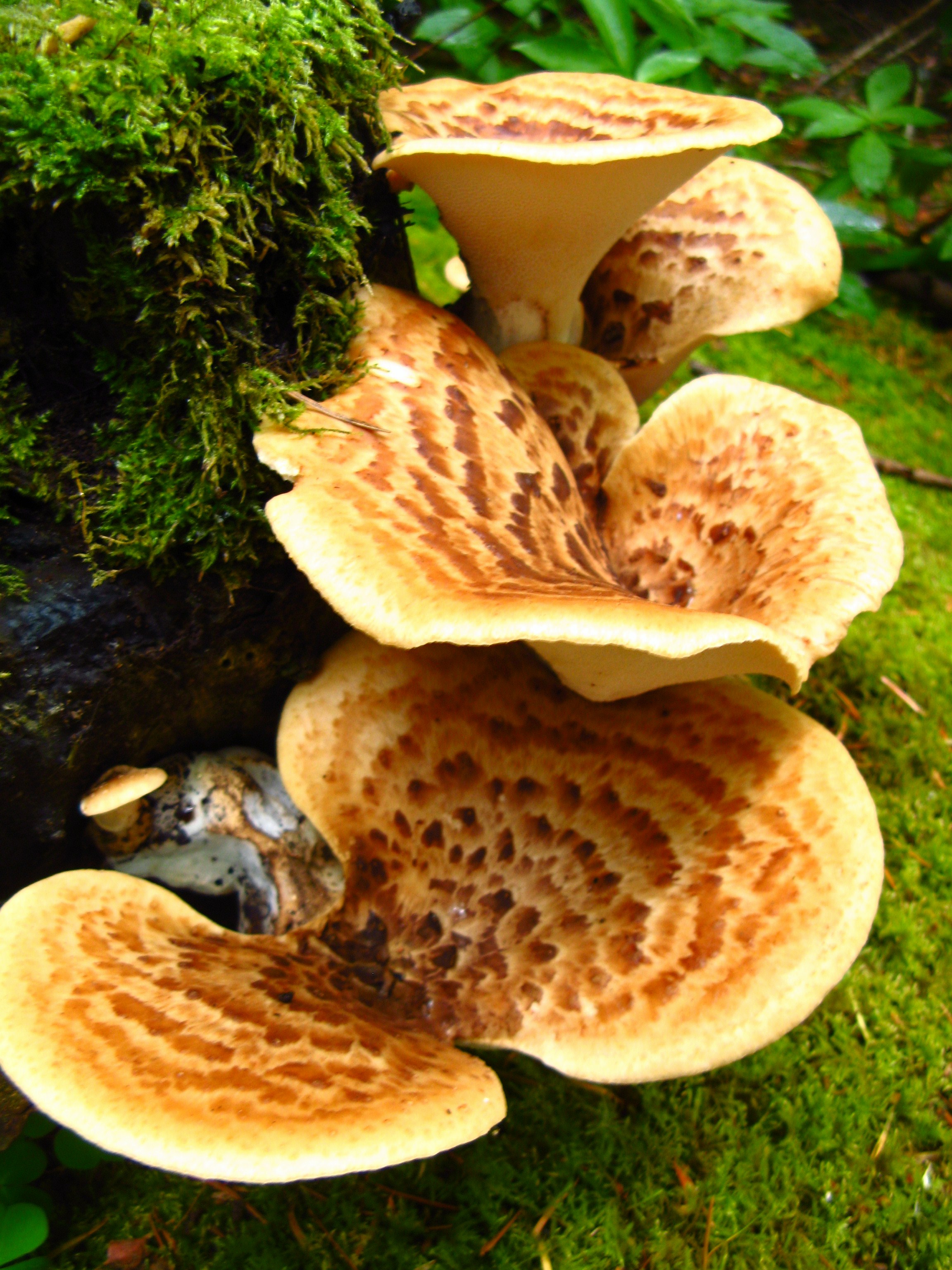
Dryad’s Saddle Edibility, Identification, Distribution Galloway
Dryad's saddle is an annual [6] mushroom commonly found attached to dead logs and stumps or on living hardwood trees at one point with a thick stem. Generally, the fruit body is round and between 8-30 centimetres (3-12 inches) across and up to 10 cm (4 in) thick. The body can be yellow to brown and has "squamules" or scales on its upper side.

Three Dryads saddle mushrooms growing on a fallen log Photograph by
Dryad saddles have a very strong farinaceous odor, similar to Clitopilus prunulus and others. To me (and most people) it resembles cucumber or watermelon rind--not a typical mushroomy aroma. Cooking will soften the flavor, but it won't remove it, and for me, and other people that like this mushroom, that's a good thing.

Mushroom. Dryad’s Saddle (Polyporaceae ) photo by John Jeffries. The
Home / Mushroom Guide / Dryad's Saddle ( 90 votes, average: 3.69 out of 5) Dryad's Saddle Edible Spring Summer View Full Size Image The largest of these specimens was over 50cm in diameter The largest capped mushroom in the UK starting early in the year and sometimes lasting until the end of Summer. Watch our videos on YouTube
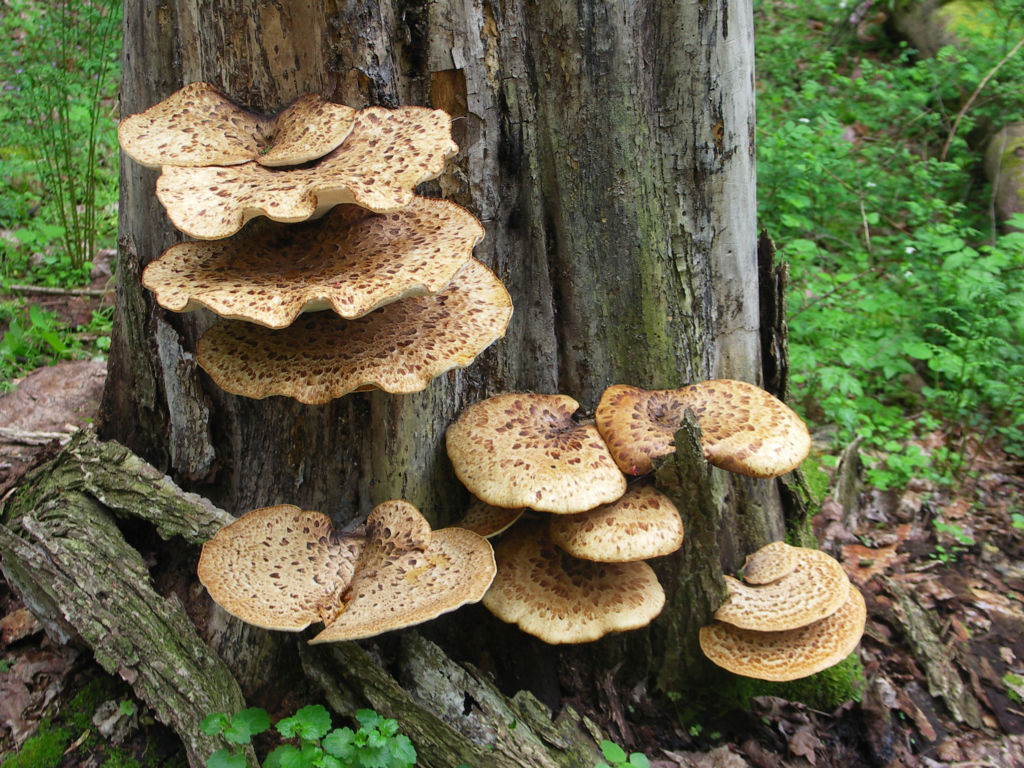
dryads saddle Western Pennsylvania Mushroom Club
How to identify. Starting out as stout little ears a little like Shrek's, this fungus grows rapidly into beautiful saucers, often in tiers all down the side of the tree upon which it lives. The cap surface is pale cream/golden and has the most beautiful pattern of brown scales on top, which also gives it it's other nickname - 'Pheasants back.
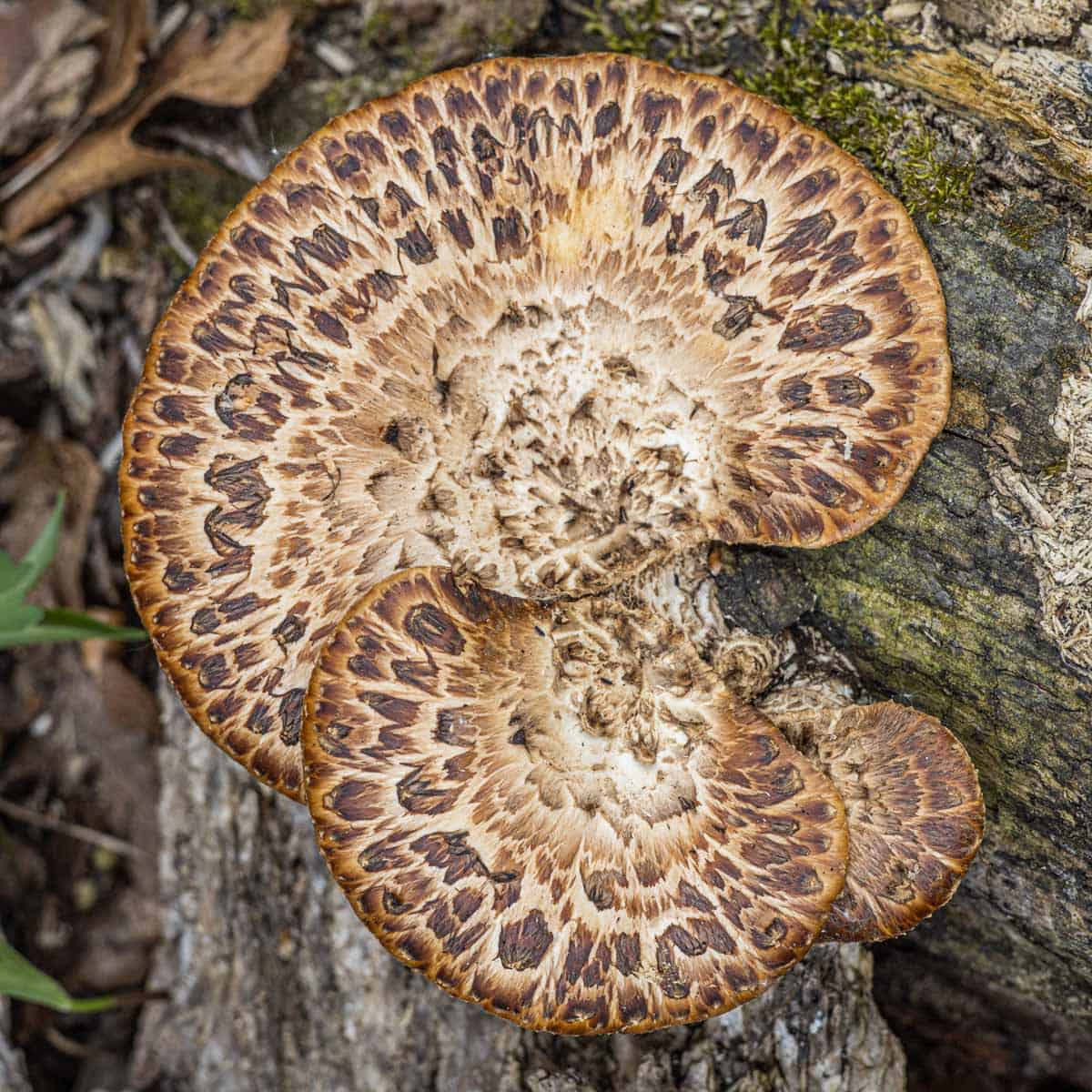
Dryad's Saddle or Pheasant Back Mushroom Forager Chef
One of the most underrated mushrooms, the Dryad's saddle ( Cerioporus squamosus, formerly known as Polyporus squamosus) is an edible mushroom with a pattern on the top of the cap that resembles pheasant feathers, hence the common name pheasant back. Pheasant tail mushrooms and saddle mushroom are two other common names.
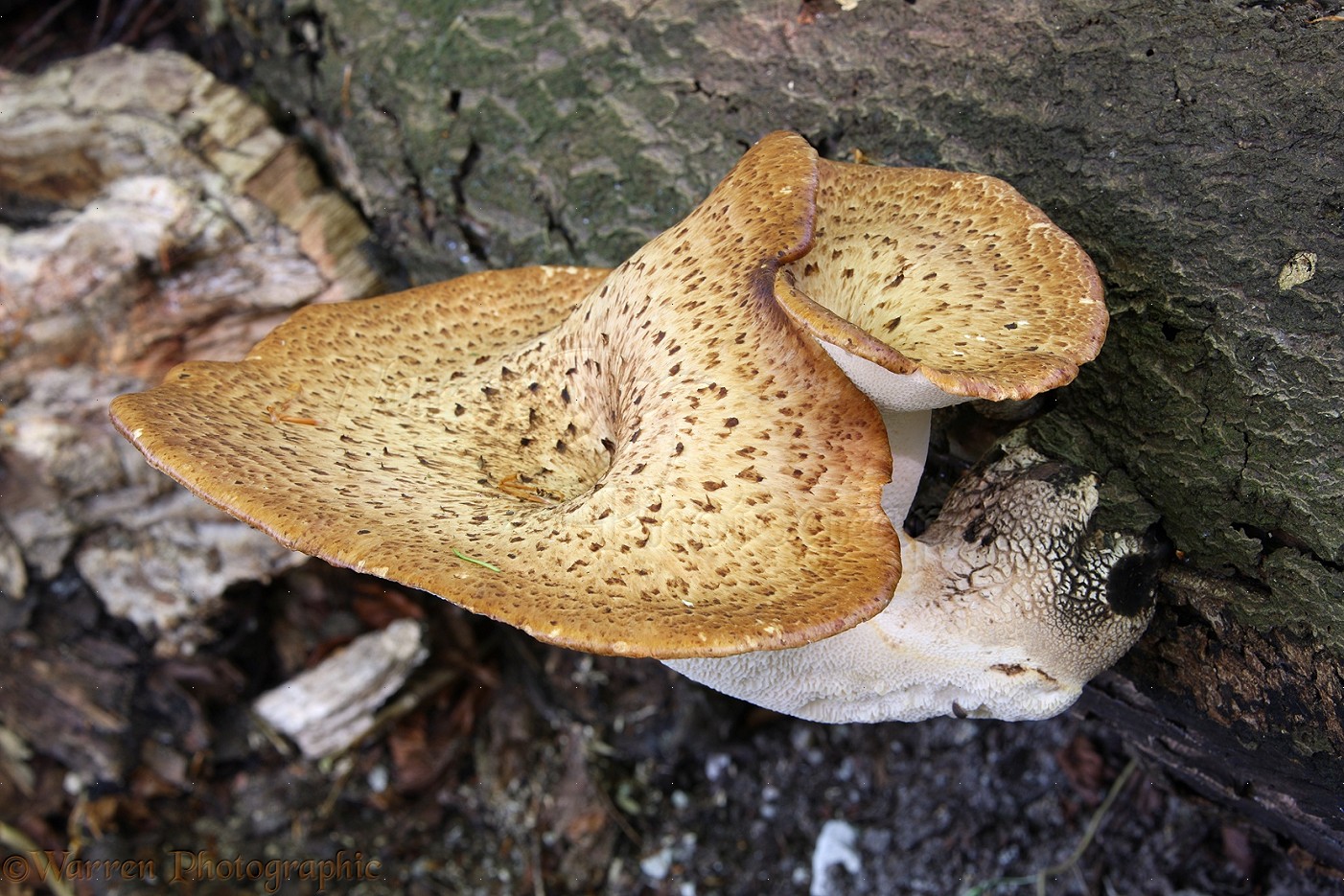
Dryad's Saddle fungi photo WP19261
Pheasant back mushrooms (Cerioporus squamosus), also commonly known as Dryad's Saddle, are a common edible mushroom that's easy to identify. They used to go by the Latin name Polyporus squamosus, so you might find them in old field guides under that name as well.
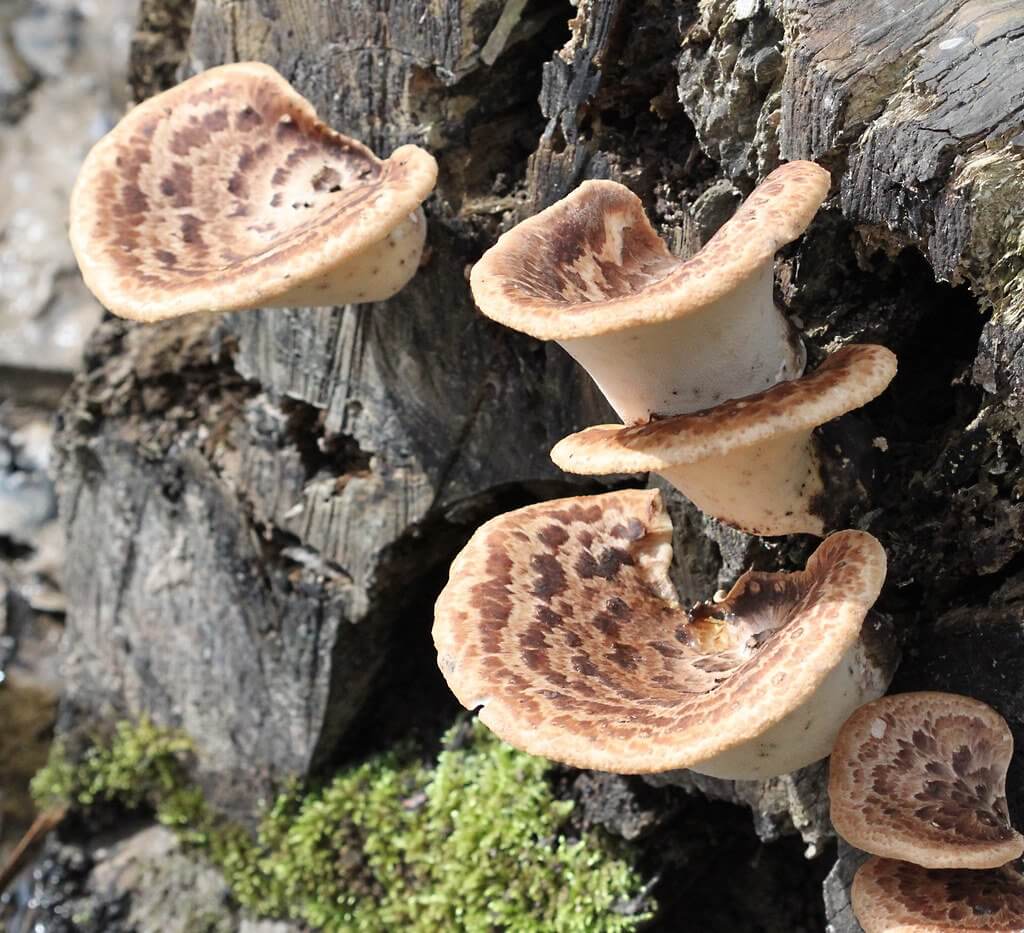
Dryad's Saddle, a Unique and Tasty Mushroom Eat The
Health benefits Dryad's saddle (Polyporus squamosus) Young Specimens (Photo by: Phil Sellens/Flickr) Much like other wild mushrooms, dryad's saddle can be a nice addition to your daily diet. These mushrooms are a wonderful source of protein and other essential nutrition.
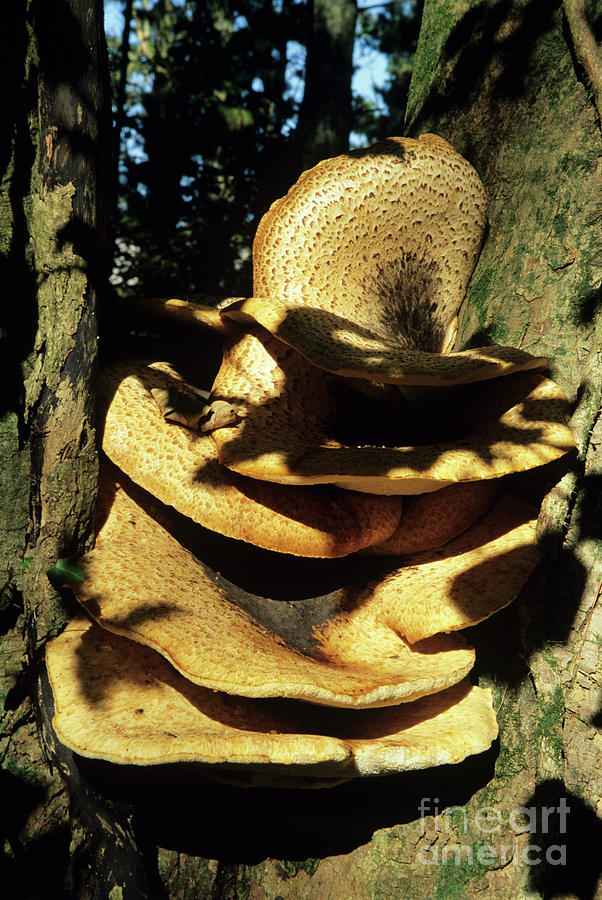
Dryad's Saddle Mushrooms Photograph by John Wright/science Photo
Dryad's Saddle as it first emerges. A giant one! These are young tender specimens that I thoroughly enjoyed. Polyporus squamosus spores 1000x. Polyporus alveolaris looks a little like it but is much smaller and very tough.

The dryad saddle mushroom, polyporus squamosus
The other common name, dryad's saddle, refers to the shape, which suggests a seat for a tree spirit (a dryad). It is also sometimes referred to as "Hawks Wing Mushroom".

DRYAD’S SADDLE MUSHROOM (Polyporus squamosus). Photographed April 19
Dryad's saddle, also known as pheasant's back, is a large, scaled cap mushroom that can decay dead trees and the sapwood of living trees. The fruiting body ranges from 3-18 inches across and can get quite thick with a yellow/brown body and a scale pattern on the top. The fruiting body is tanish/brown on top and cream on the bottom.

Dryad's Saddle Mushrooms © Stuart Wilding Geograph Britain and Ireland
A simple preserve of dryad saddle or pheasant back mushrooms. It's similar to a mushroom duxelles and can be used in sauces and stuffings. It's springtime again, and with it comes the onslaught of Dryad Saddle, a.k.a Pheasant Back mushrooms here in Minnesota.
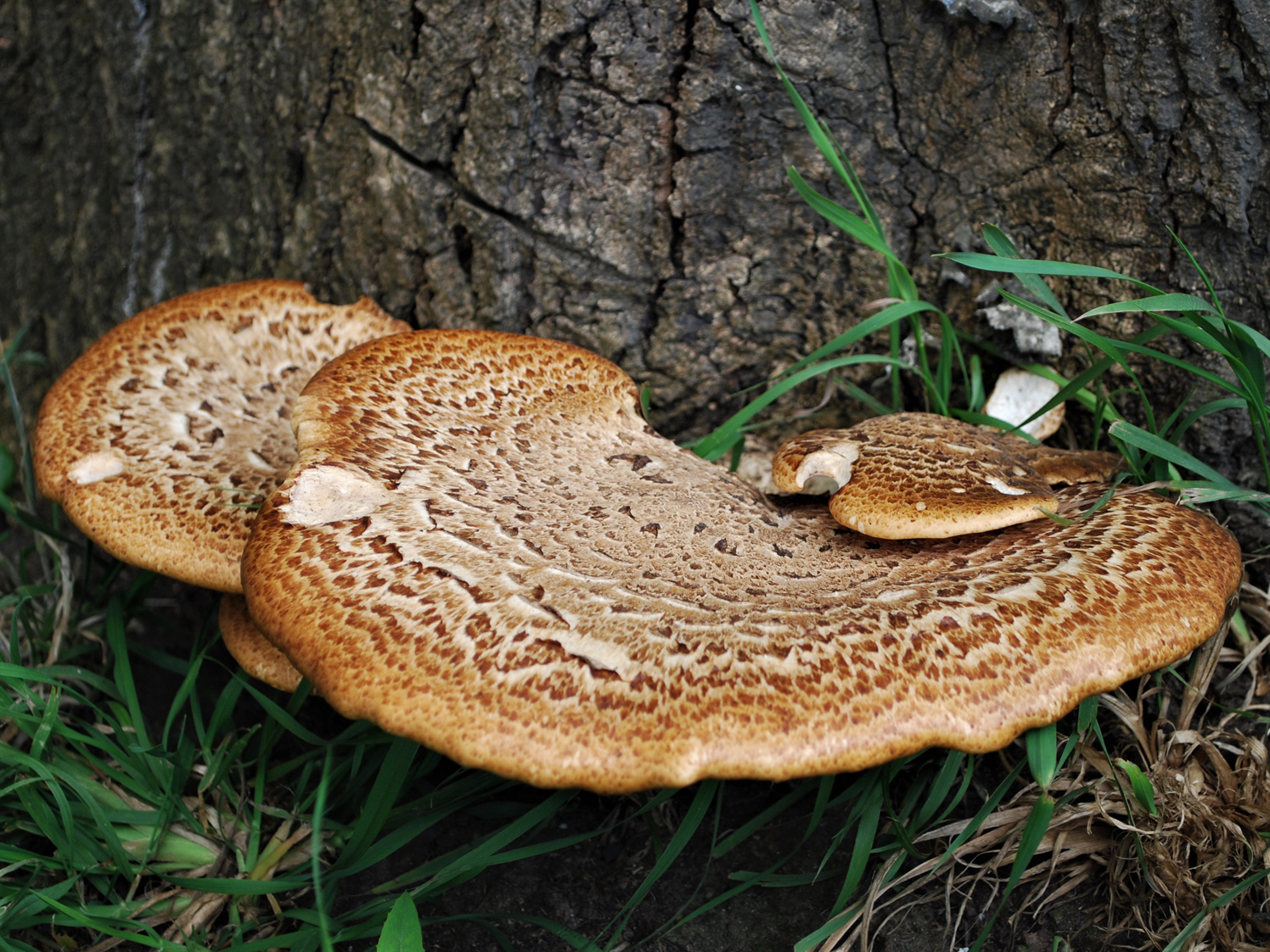
Dryad's Saddle
Dryad's saddle typically has a 6 cm (2.36") stem that is attached to the wood and is up to 4cm (1.57") thick. Habitat Dryad's saddle grows saprotrophically on fallen logs and tree stumps. It can also be found growing parasitically on hardwood trees such as maple, elm, box elder and other deciduous trees.